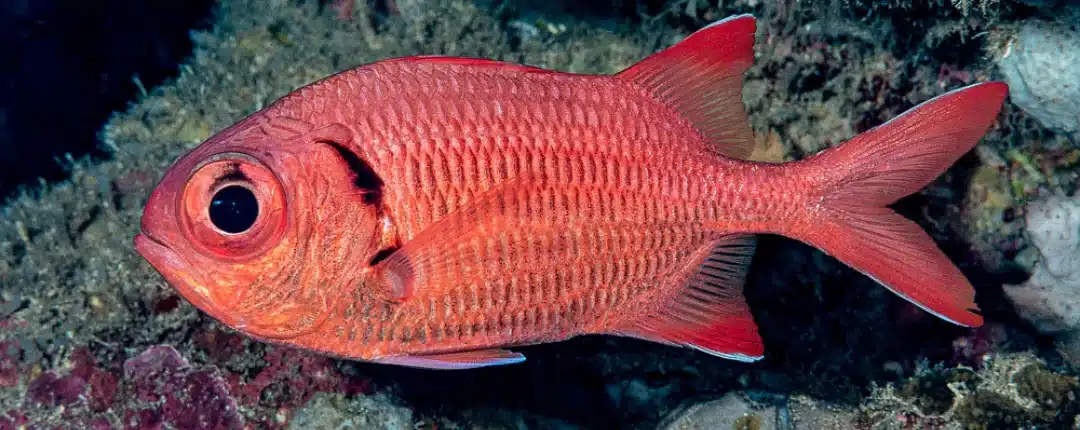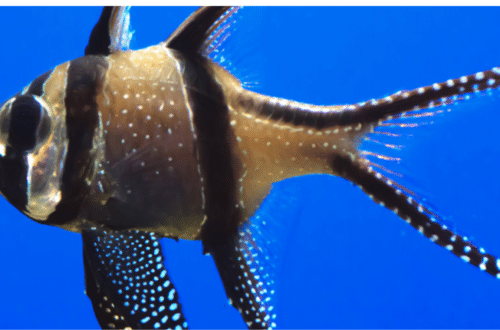With their dinner plate-sized eyes and tubular bodies, big-eyed fish look unlike any other creatures of the deep. These mesmerizing animals inhabit the sunless depths of the ocean, using their giant, highly sensitive eyes to spot prey in even the dimest environments. Bigeyes come in an array of colours and patterns that dazzle the imagination. Their unique adaptations allow them to thrive under extreme pressures that would crush humans.
Bigeyes fish remain mysterious and rarely observed in their secretive habitats. Read on to learn about these fascinating denizens of the deep – from what they eat to how they mate and care for their young in completely light conditions. Their amazing world awaits below.
The Allure of Bigeyes Fish in the Depths

Big eyes are a defining characteristic of these fish, serving both functional and aesthetic purposes. These oversized orbs contribute to their unique appearance and are crucial to survival. Let’s delve into the reasons behind the evolutionary development of such striking eyes.
Evolutionary Advantage of Big Eyes
Big eyes provide a distinct advantage in the dimly lit depths of the ocean. They allow these fish to gather more light, enhancing their vision and enabling them to navigate the complex underwater environment more effectively. This adaptation showcases the marvels of evolution in crafting organisms perfectly suited to their habitats.
Adapting to low-light conditions
The deep-sea environment, where many big-eyed fish thrive, is characterized by limited sunlight penetration. Understanding how these creatures have adapted to low-light conditions sheds light on the intricacies of their survival strategies.
Big Eyes and Efficient Hunting
The enlarged eyes not only aid in navigating darkness but also contribute to the hunting prowess of these fish. They can spot prey from a considerable distance, giving them a competitive edge in the quest for food. The interplay between their big eyes and hunting strategies showcases the fascinating balance of nature.
Diversity in the Big-Eyed Fish Family
Big-eyed fish come in many species, each with unique characteristics and behaviours. Exploring this diversity provides valuable insights into the rich tapestry of marine life. Let’s uncover the varied members of the big-eyed fish family and their roles in the underwater ecosystem.
Lanternfish: Illuminating the Depths
Among the most intriguing big-eyed fish is the lanternfish, known for its ability to produce bioluminescent light. This unique adaptation not only aids in communication but also serves as a defense mechanism against predators. Understanding the intricacies of this bioluminescence opens a portal to the wonders of underwater communication.
Bioluminescence as a Survival Strategy
The ability to produce light gives lanternfish a distinctive advantage in the darkness of the deep sea. It serves multiple purposes, from attracting mates to confusing predators. Examining the science behind bioluminescence unveils the marvels of nature’s ingenuity.
The Role of Lanternfish in the Food Chain
Beyond their captivating glow, lanternfish play a vital role in the marine food chain. Their position as predator and prey creates a delicate balance, influencing the dynamics of the entire ecosystem. Appreciating the interconnectedness of species highlights the importance of preserving these unique creatures.
Big-Eyed Fish in Popular Culture
The allure of big-eyed fish extends beyond scientific inquiry, making its mark in popular culture. From artistic representations to folklore, these creatures have woven themselves into the fabric of human creativity. Let’s explore the cultural significance of big-eyed fish and their impact on art and storytelling.
Big Eyes in Creative Expressions
In various cultures, big eyes are symbolic of heightened perception and awareness. Artists, inspired by this symbolism, have incorporated big-eyed fish into their creations to convey themes of depth and insight. Exploring the artistic representations of these creatures provides a glimpse into the diverse interpretations of their significance.
Big-Eyed Fish in Mythology
Many myths and legends feature big-eyed fish as mystical beings with otherworldly qualities. These stories often attribute supernatural powers to these creatures, further enhancing their mystique. Examining the cultural narratives surrounding big-eyed fish reveals their profound impact on shaping human imagination.
Big-Eyed Fish in Modern Media
Big-eyed fish continue to captivate audiences in modern media, from animated characters to mascots. Their endearing appearance and associations with curiosity and wonder make them popular choices for conveying emotions. Exploring their representation in contemporary media sheds light on the enduring appeal of these aquatic marvels.
Conservation Challenges and Efforts for Big-Eyed Fish
As human activities increasingly impact marine ecosystems, big-eyed fish face numerous threats to survival. Conservation efforts are crucial to ensure the continued existence of these fascinating creatures. Let’s examine the challenges they encounter and the initiatives aimed at safeguarding their habitats.
Threats to Big-Eyed Fish Populations
The demand for seafood has led to overfishing, directly impacting big-eyed fish populations. Additionally, habitat destruction due to human activities such as bottom trawling further exacerbates the challenges faced by these species. Understanding the anthropogenic threats helps formulate targeted conservation strategies.
Climate Change and Its Ripple Effects
Climate change poses a significant threat to marine ecosystems, affecting the distribution and abundance of big-eyed fish. Shifts in ocean temperatures and currents can disrupt their natural habitats, creating a domino effect throughout the food chain. Examining the interconnected impact of climate change on these creatures underscores the urgency of global conservation efforts.
Plastic Pollution: A Silent Menace
The pervasive issue of plastic pollution poses a silent but lethal threat to big-eyed fish. Ingestion of microplastics and entanglement in larger debris jeopardize their health and well-being. Analyzing the consequences of plastic pollution emphasizes the need for sustainable practices to mitigate its detrimental effects.
Conservation Initiatives: Preserving the Legacy of Big-Eyed Fish
Establishing marine protected areas (MPAs) is crucial in conserving big-eyed fish habitats. These designated zones provide a sanctuary where these creatures can thrive without the immediate threat of fishing or habitat degradation. Examining the effectiveness of MPAs contributes to the ongoing discourse on marine conservation.
Sustainable Fishing Practices
Adopting sustainable fishing practices is paramount to ensuring the long-term survival of big-eyed fish. Implementing measures such as size limits, seasonal closures, and gear restrictions can strike a balance between human needs and environmental preservation.
Exploring the principles of sustainable fishing sheds light on the potential for coexistence between humans and marine life.
Public Awareness and Education
Raising public awareness about the importance of big-eyed fish in marine ecosystems is vital to conservation efforts. Education initiatives can inspire collective action and foster a sense of responsibility towards preserving the oceans. Analyzing successful awareness campaigns provides insights into effective strategies for engaging communities in marine conservation.
Conclusion
The enigmatic world of big-eyed fish, with their dinner plate-sized eyes and unique adaptations, remains a captivating exploration subject. From the depths of the ocean to the realms of mythology and modern media, big-eyed fish continue to intrigue and inspire. As we navigate conservation challenges, preserving the legacy of these remarkable creatures becomes paramount.
The urgent need for sustainable practices and public awareness underscores our collective responsibility to safeguard the delicate balance of the oceans and the enduring allure of big-eyed fish.






